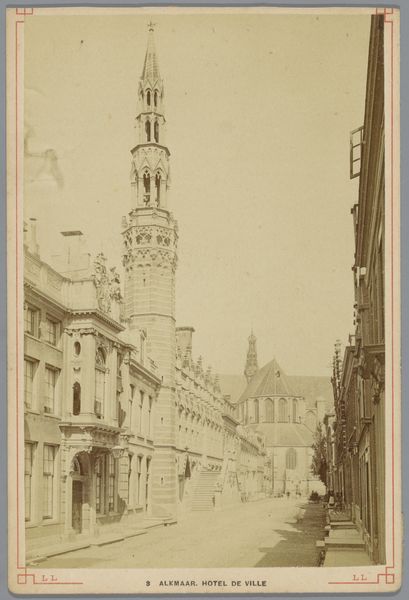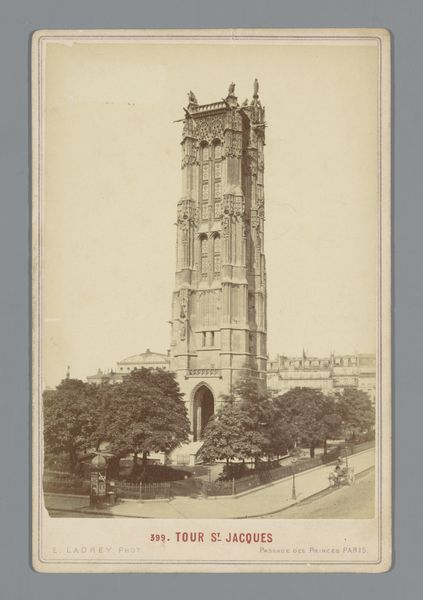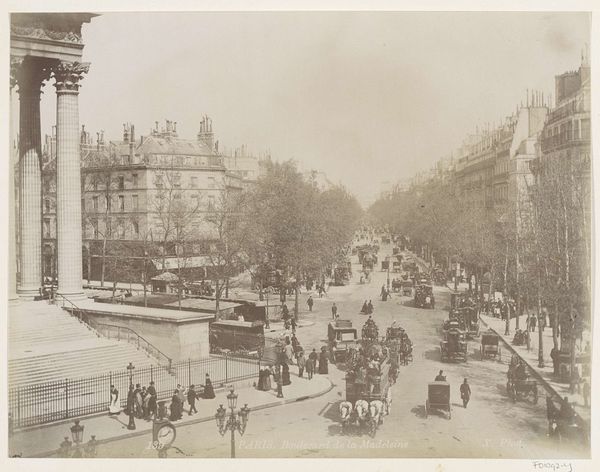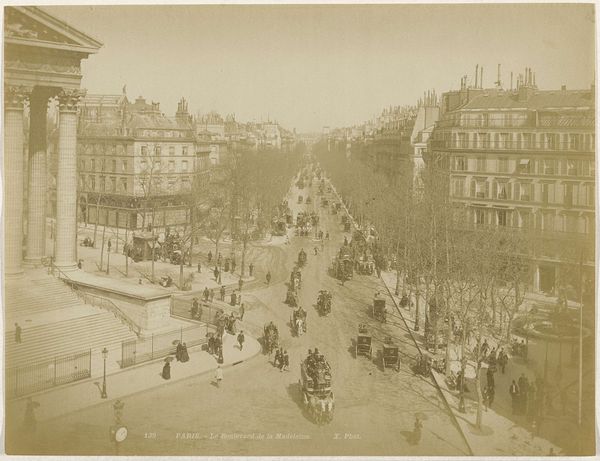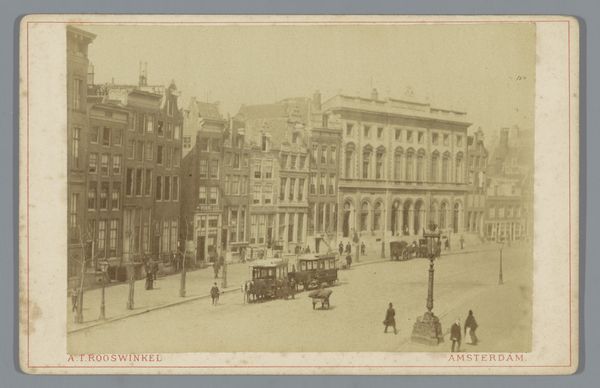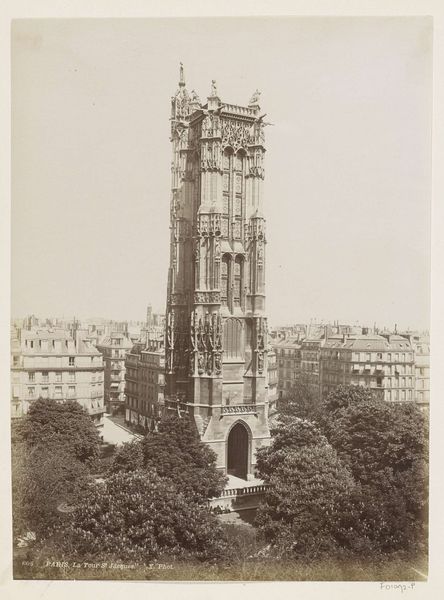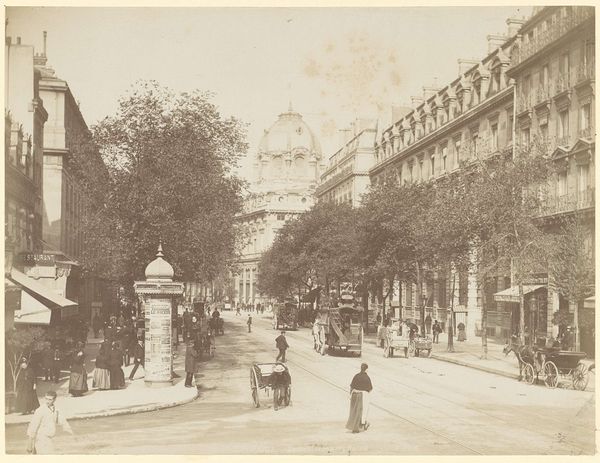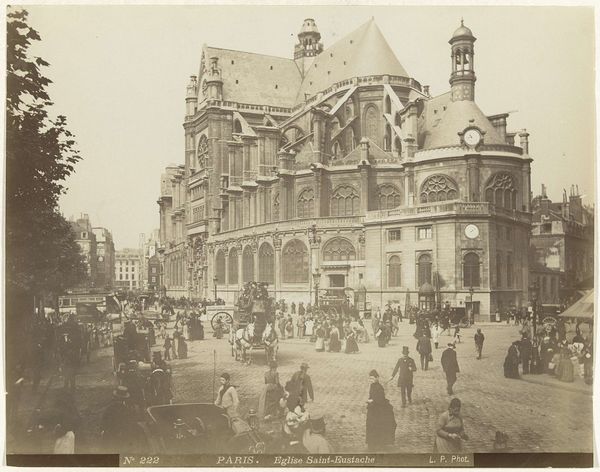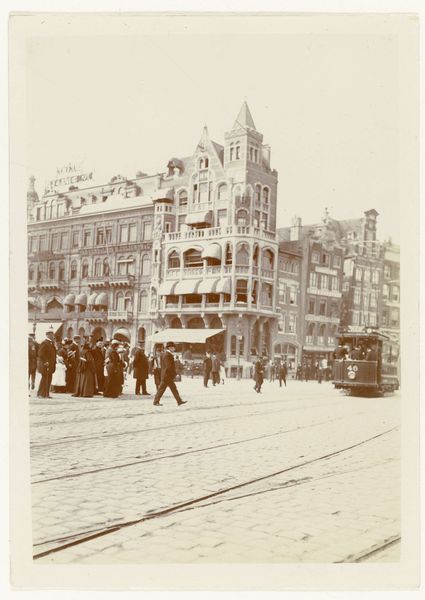
Straatgezicht in Parijs met op de achtergrond de Tour Saint-Jacques 1870 - 1900
0:00
0:00
photography, gelatin-silver-print
#
impressionism
#
outdoor photograph
#
archive photography
#
photography
#
historical photography
#
gelatin-silver-print
#
cityscape
#
street
Dimensions: height 274 mm, width 217 mm, height 392 mm, width 315 mm
Copyright: Rijks Museum: Open Domain
Editor: This gelatin-silver print, taken by Louis Antoine Pamard sometime between 1870 and 1900, is titled "Straatgezicht in Parijs met op de achtergrond de Tour Saint-Jacques," or "Street View in Paris with the Tour Saint-Jacques in the Background." It's a bustling street scene dominated by the looming gothic tower. I'm struck by how it captures a specific moment in Parisian history. What historical insights does this image offer? Curator: This photograph really encapsulates the shifting urban landscape and social fabric of Paris during that era. Consider the Tour Saint-Jacques, originally part of a church, now standing somewhat isolated amidst Parisian modernization. Notice the mix of horse-drawn carriages and pedestrians. This visual layering tells a story of transition, doesn’t it? Editor: It does. I guess I hadn't thought about the Tour as a remnant, a survivor almost. How did photography like this shape public perceptions of Paris at the time? Curator: Photographs like Pamard’s played a key role in shaping both the image and the memory of Paris. The rise of photography coincided with major urban redevelopment projects. These images became powerful tools for documenting, promoting, and even romanticizing these changes. They captured a city in flux, influencing how Parisians and the world at large perceived their capital. Think of how many images were created, what they showed, and what they deliberately left out. Who had access to these images and what narratives were being constructed through them? Editor: So, the photograph isn’t just a neutral record, but a carefully constructed representation, tied to power dynamics and public image. Curator: Precisely. And looking closely, one can explore questions about who is represented, who is not, and what kind of life is prioritized within the frame. What has stayed and what has changed in our viewing experience since? Editor: That’s a lot to consider. I'll definitely look at photographs differently now, understanding them as both historical documents and curated viewpoints. Thanks! Curator: Indeed. Each photograph, seemingly simple, offers a complex reflection of society. Considering these dynamics opens up rich possibilities for interpretation and critique.
Comments
No comments
Be the first to comment and join the conversation on the ultimate creative platform.
